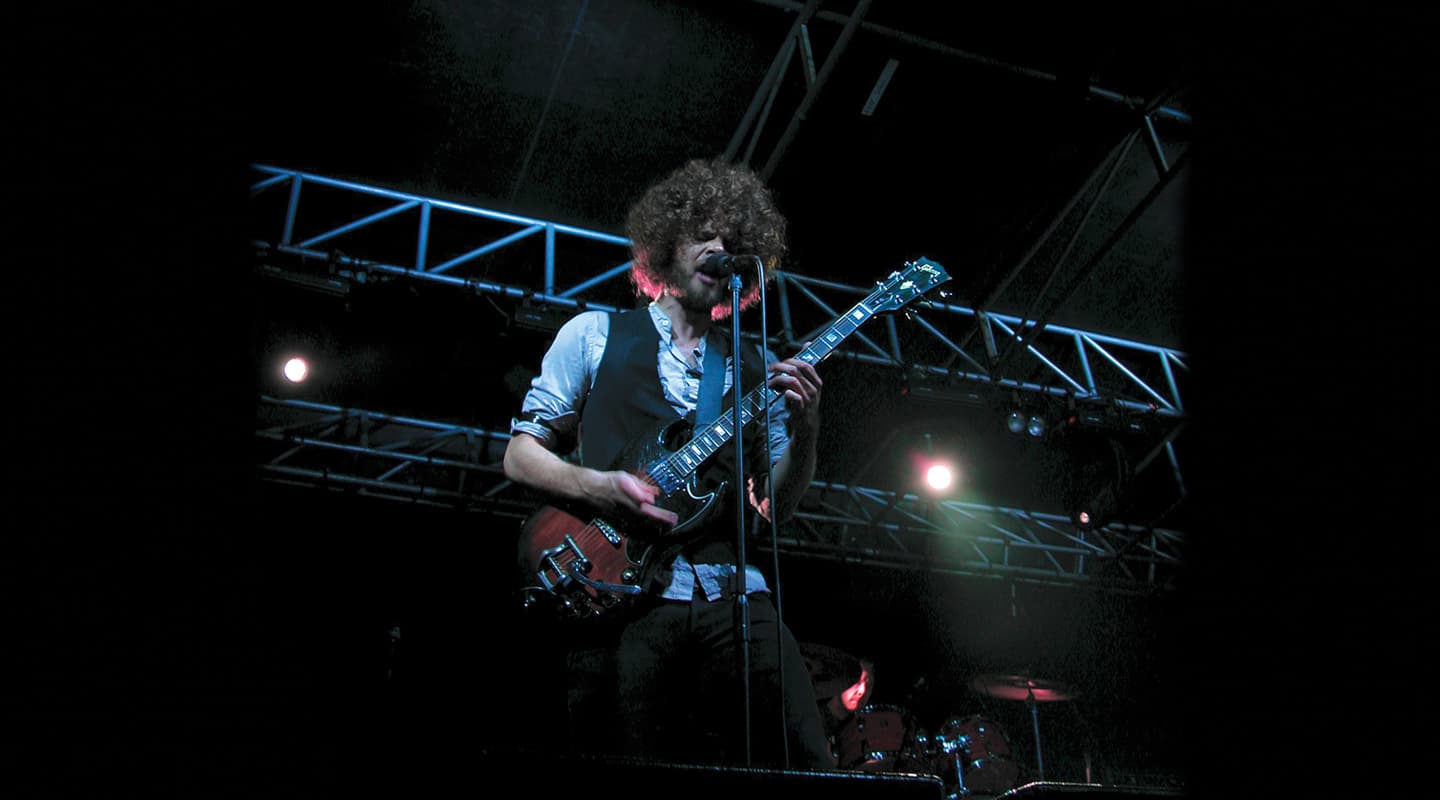
Wolfmother: Live at Kryal Castle
The good burghers of Ballarat descended on Keith Ryall’s castle for a medieval night of rock. Bruce Johnston called it his ‘best castle gig ever’.
Text: Christopher Holder
Forsooth! It was the night that rock ‘n’ roll went medieval.
A howling southerly whipped the cape of a shadowy figure as he scaled a Nexo Alpha PA. Holding aloft a giant broadsword, he loudly anointed the adoring minions “the best audience in the world!”. And, verily, a cheer erupted that shook the very foundations of the castle that encompassed them.
Kryal Castle, just outside of Ballarat, is a peculiar joint. It’s a full-on medieval-style structure and in its heyday was a popular place for squires and wenches to take in some jousting, falconry, etc. It was a little like Sovereign Hill in chain mail. These days, Kryal Castle has become a novelty venue for rave parties and the odd gig.
COLD COMFORT
Ballarat’s not known for its balmy weather and on this particular April day the castle felt more like a North Sea lighthouse – an icy wind was blowing rain through the compound like crossbow bolts.
“I had my jumper on, my jacket on, I wrapped myself in the Midas console cover and I had my headphones on as much as I could just to keep my ears warm.” Bruce Johnston, is a legend of the game and has mixed sound in just about every venue on the planet, thanks to his commitments as long-time FOH engineer for Oasis and a history of mixing virtually every high-profile Aussie act on the world stage. But, for a bloke that’s seen it all, you get the feeling that even he was somewhat taken aback by the severity of the ‘thermal in version’ – “I think that Ballarat show was one of the coldest outdoor gigs I’ve ever done,” Bruce commented later. “I should have taken my wife’s advice and worn two pairs of socks.”
Bruce’s troops soldiered on manfully, ably led by Ritchie Robinson, but the sleet wasn’t making setup particularly straightforward and the schedule had long since been ripped up. Around 6pm the Jack Daniels girls, in their (cruelly and ironically named) hot pants and crop tops, had reported for duty wearing the startled look of those who’d just been rescued from a capsized ferry on the Baltic. The (soon to be) capacity crowd was also trickling in, the early punters trying to find some shelter the moment they arrived. All the while, the Johnston Audio guys and the Wolfmother crew frantically line-checked and fine-tuned.
At this point Bruce was conspicuous by his absence. “We just turned up. It was freezing cold and off we went. The stage was definitely small, in fact, the monitor system was in the back of the truck. There was no band room behind the stage. It was about zero degrees… I think it made for a really good gig!”
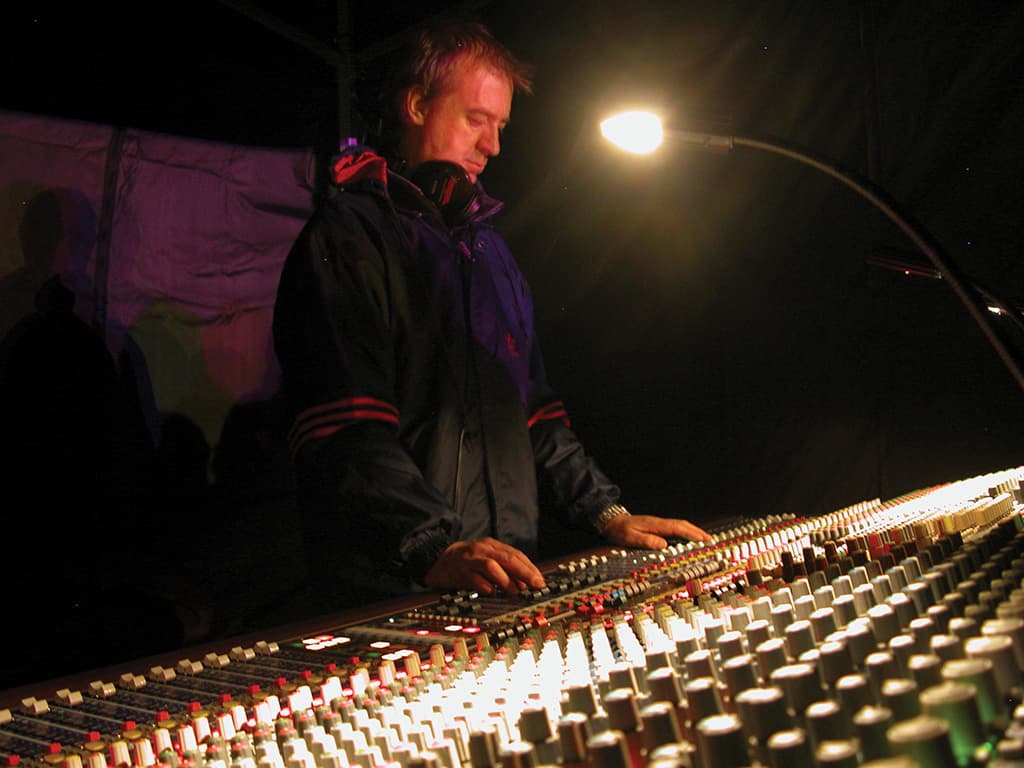
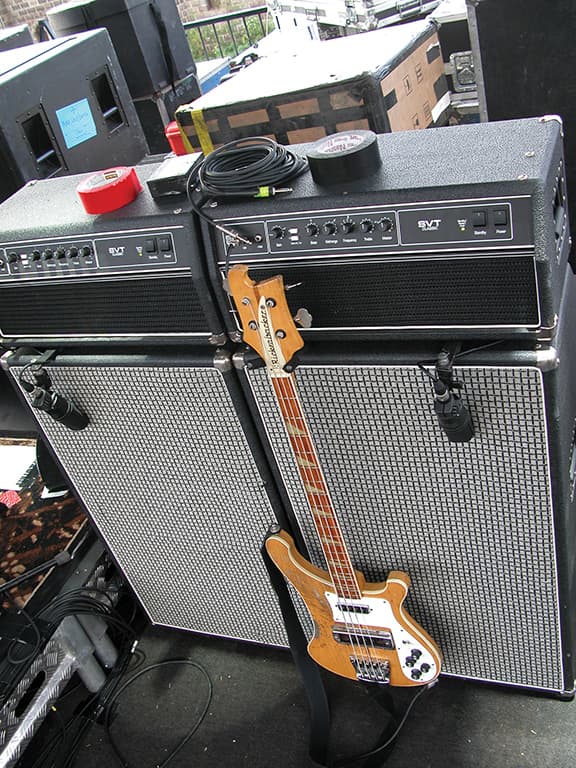
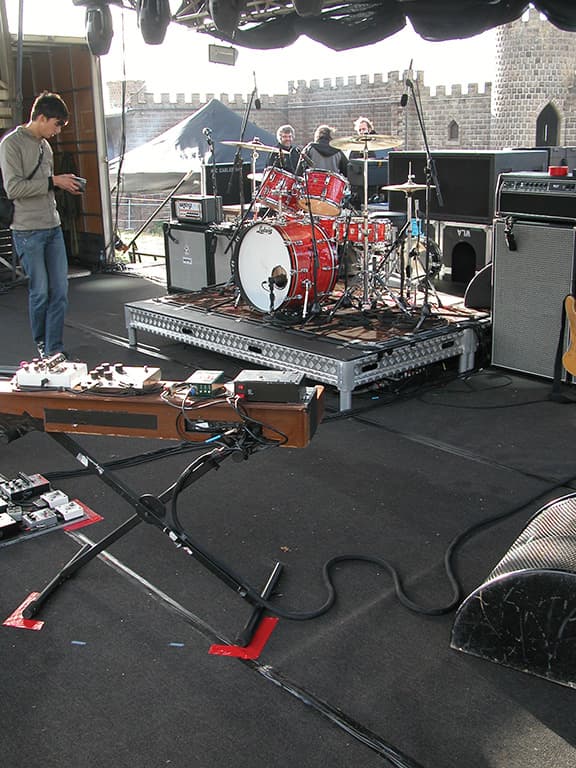
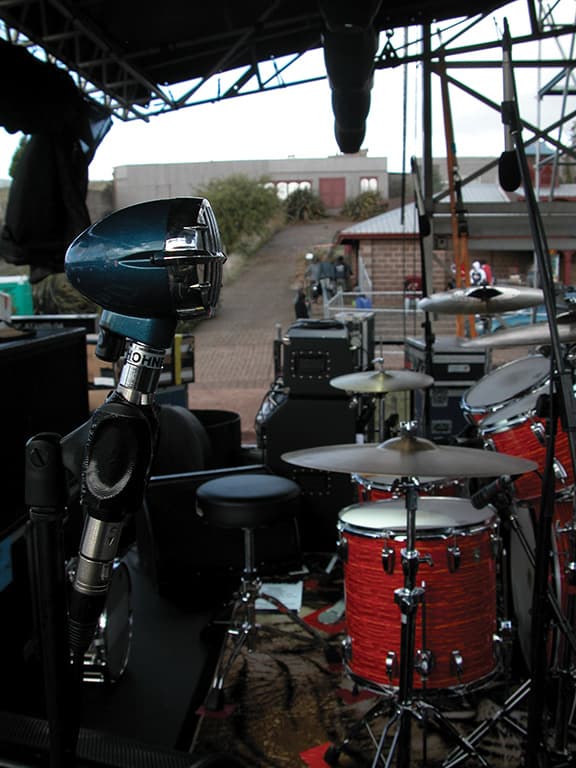
ROCK UP, ROCK OUT
It was Bruce’s contention that with enough tension, and enough obstacles, everyone – him, the band, the crew, the audience – was simply more up for it. In fact, parachuting into a gig and instantly pushing faders is Bruce’s preferred MO these days.
Bruce Johnston: I mixed The Killers a couple of months ago. I was on a business trip, they needed a sound guy, and I just happened to walk into the gig. Brandon, the singer, came up to me prior to the first show and said: “do you know our album well?” I had to admit that I’d not heard their album, and they looked at me as though I was out of my mind. I said: “look, just let it come to me, that’s the best way I work”. And I had one of the best gigs of my life. I think it was because I had no idea what I was getting and it gave me an edge… that adrenalin kick just made me sharper.
These days, with Oasis I fly out a couple of days before we start. I certainly don’t do three weeks production rehearsals with them any more.
Christopher Holder: How did you approach the Wolfmother gigs?
BJ: It was only a two-week Australian tour between legs of an international tour. And I agreed to stop the gap. Initially, I took out a lot of stuff but then broke it down to what I thought I needed.
CH: What’s in your neverfail tool kit?
BJ: Generally I’ll take 10 or 12 compressors, eight channels of gates, and four effects units – a high-end Lexicon PCM80 or a TC M5000 for the vocal reverb, and a couple of Yamaha SPX900s or a 2000 for the drums, a spare SPX990 and a delay unit. Naturally it depends on the band. If I was going out to mix an ’80s keyboard reunion I’d treat it differently – I’d probably have 30 compressors and 20 reverb units… actually, I’d probably just take out a digital desk.
That Ballarat show was one of the coldest outdoor gigs I’ve ever done. I should have taken my wife’s advice and worn two pairs of socks
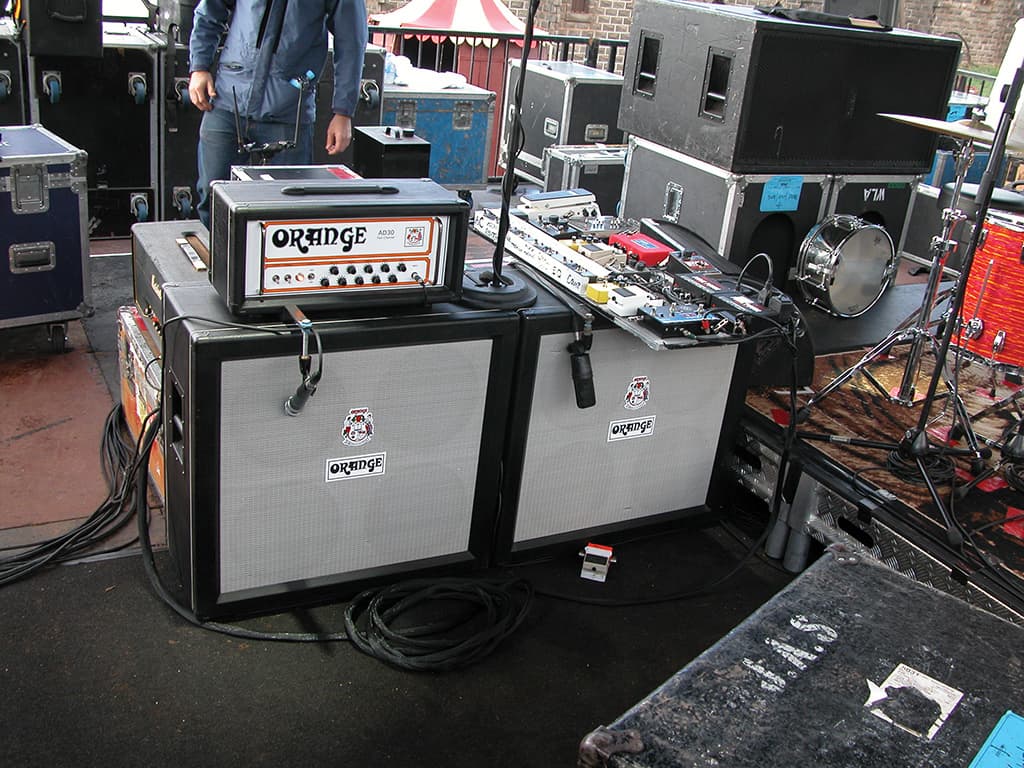
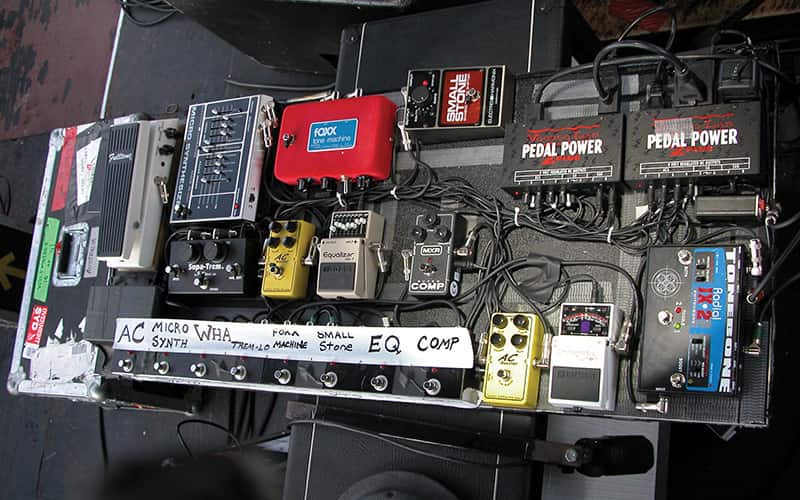
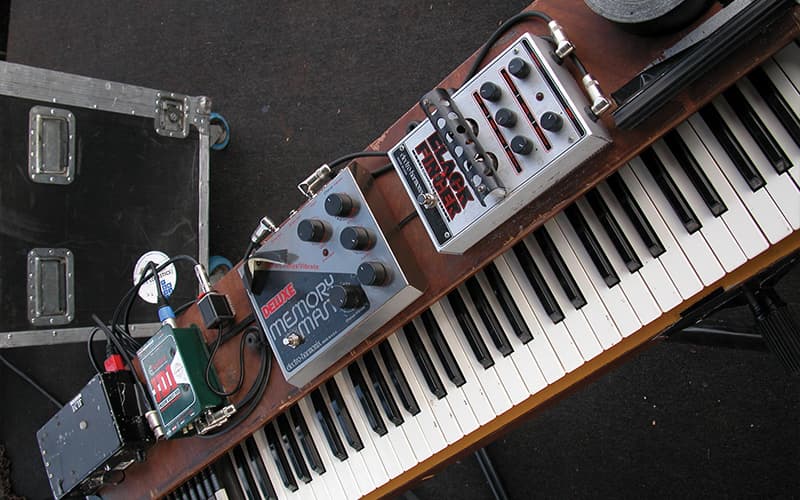
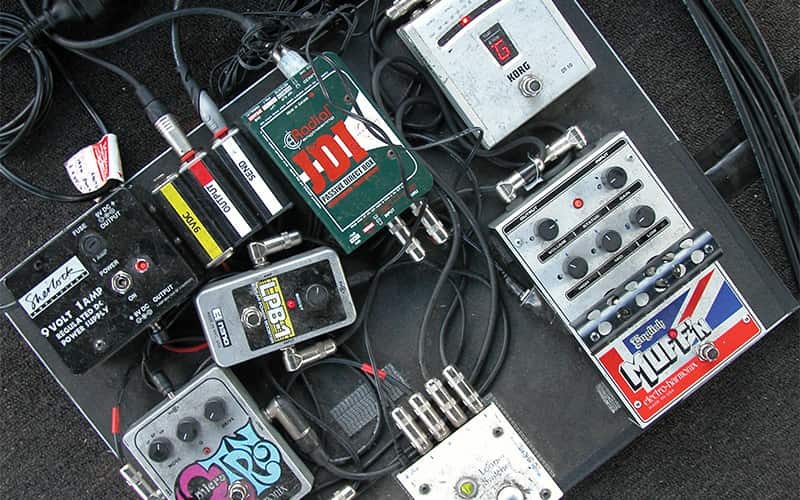
CH: And what did you end up using in the case of Wolfmother?
BJ: I kept it pretty dry – I didn’t add too much. I really only just used two effects units in the end. I had a delay and reverb, eight compressors, six channels of gates and that was it. The band owns their own mics and their setup is well organised.
CH: I guess it’s a three-piece rock ‘n’ roll band after all.
BJ: And their sound is about how the songs are written. It’s based on a lot of jamming. It kinda reminded me of the ’70s when you bought an LP and the B-side only had one 26-minute song on it!
I didn’t have to do much. There were moments where the band gets really tough and the whole thing lifts and gets really big. They then break it right down – they jam it out and get really quiet. I think that’s a really good dynamic – if Wolfmother was full-on from front to back it’d be almost too much.
CH: And evidently you allow them to have that light and shade – you don’t try and fight it.
BJ: If I get asked my opinion, I’ll say, ‘these four songs are really heavy; it’s a good chance to break the middle of the set before the onslaught at the end’ as opposed to keeping it at Warp 10 from front to back. I think the light and shade really makes the band.
CH: Is it hard to make a three-piece sound big?
BJ: At times there’s not a lot of sub. When the bass guitarist is playing the organ you tend to miss the bass. But I still thought it sounded big. It’s a very clean sound. No matter how dirty they want to get it, they sound pretty clear because there are only three people on stage. And that makes it easier to mix.
CH: And how does the gear respond to the cold?
BJ: I like the sound of the horns in the cold. When it’s really hot, the horns will fuzz up, especially in the humidity. The top end seems to sound really nice when it’s cold, and I think it’s because nothing’s overheating. I reckon Kryal Castle sounded pretty good for just turning up and rocking, and I think the weather helped… ironically.
STOCKS RISING
Wolfmother’s Tarago entourage rolled through the portcullis over an hour later than scheduled, and the frostbitten crowd erupted when Andrew Stockdale arrived on stage with his sword… looking for all the world like a Lord of the Rings extra. It was an excellent gig and clearly Wolfmother deserve the accolades.
BJ: “Until these gigs I’d not paid much attention to Wolfmother. But when I mentioned the band’s name to a couple of people overseas they were amazingly into it. It made me think that here’s a band that’s established itself really well around the world, and is probably more respected than Oasis! I mean, this is the ‘Grammy Award-winning’ Wolfmother.


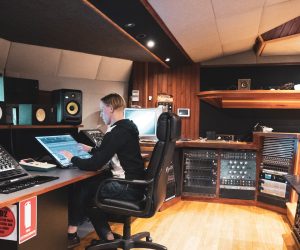


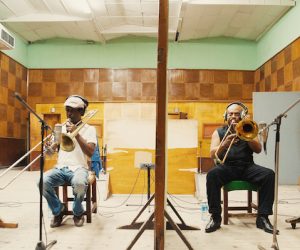

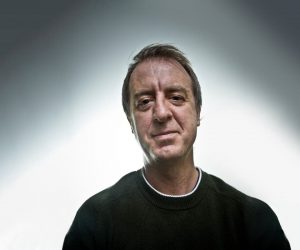








RESPONSES